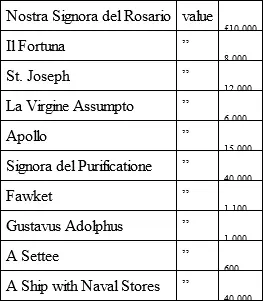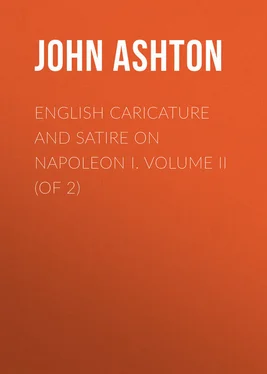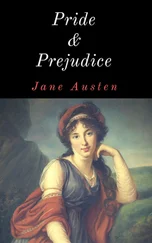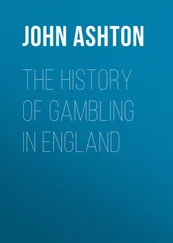John Ashton - English Caricature and Satire on Napoleon I. Volume II (of 2)
Здесь есть возможность читать онлайн «John Ashton - English Caricature and Satire on Napoleon I. Volume II (of 2)» — ознакомительный отрывок электронной книги совершенно бесплатно, а после прочтения отрывка купить полную версию. В некоторых случаях можно слушать аудио, скачать через торрент в формате fb2 и присутствует краткое содержание. Жанр: foreign_antique, foreign_prose, на английском языке. Описание произведения, (предисловие) а так же отзывы посетителей доступны на портале библиотеки ЛибКат.
- Название:English Caricature and Satire on Napoleon I. Volume II (of 2)
- Автор:
- Жанр:
- Год:неизвестен
- ISBN:нет данных
- Рейтинг книги:4 / 5. Голосов: 1
-
Избранное:Добавить в избранное
- Отзывы:
-
Ваша оценка:
- 80
- 1
- 2
- 3
- 4
- 5
English Caricature and Satire on Napoleon I. Volume II (of 2): краткое содержание, описание и аннотация
Предлагаем к чтению аннотацию, описание, краткое содержание или предисловие (зависит от того, что написал сам автор книги «English Caricature and Satire on Napoleon I. Volume II (of 2)»). Если вы не нашли необходимую информацию о книге — напишите в комментариях, мы постараемся отыскать её.
English Caricature and Satire on Napoleon I. Volume II (of 2) — читать онлайн ознакомительный отрывок
Ниже представлен текст книги, разбитый по страницам. Система сохранения места последней прочитанной страницы, позволяет с удобством читать онлайн бесплатно книгу «English Caricature and Satire on Napoleon I. Volume II (of 2)», без необходимости каждый раз заново искать на чём Вы остановились. Поставьте закладку, и сможете в любой момент перейти на страницу, на которой закончили чтение.
Интервал:
Закладка:
So we see that there was no hope of peace, as yet, and the war goes on. I can hardly localise the following caricature: —
Argus (January 24, 1805) drew ‘The glorious Pursuit of Ten against Seventeen.
God like his Courage seem’d, whom nor Delight
Could soften, nor the Face of Death affright.’
The French and Spaniards are in full flight, calling out, ‘By Gar dare be dat tam Nelson dat Salamander dat do love to live in de fire, by Gar we make haste out of his way, or he blow us all up.’ Nelson leads on nine old sea dogs, encouraging them thus: ‘The Enemy are flying before you my brave fellows, Seventeen against Ten of us. Crowd all the Sail you can, and then for George, Old England — Death or Victory !!!’ His followers utter such sentences as the following: ‘My Noble Commander, we’ll follow you the world over, and shiver my Timbers but we shall soon bring up our lee way, and then, as sure as my name is Tom Grog, we’ll give them another touch of the Battle of the Nile’ – ‘May I never hope to see Poll again, if I would not give a whole month’s flip if these lubberly Parly vous would but just stop one half watch,’ &c. &c.
The style in which our sailors worked is very aptly illustrated in a letter from an officer on board the Fisgard , off Cape St. Vincent, dated November 28, 1804. 5 5 The Naval Chronicle , 1805.
We must remember that war was not officially declared against Spain until January 11, 1805; but this gentleman writes: ‘We cannot desire a better station; we heard of hostilities with Spain on October the 15th, and on that very day we captured two Ships. Lord Nelson received from us the first intelligence – we have already taken twelve ships and entertain hopes of as many more. Yesterday we fell in with the Donegal , Capt. Sir R. Strachan, who has taken a large Spanish Frigate, the Amphitrite , after a chase of 46 hours, and 15 minutes’ action, in which the Spanish Captain was killed; the prize was from Cadiz, with despatches for Teneriffe and the Havana , laden with stores. The Amphitrite Frigate, of 42 Guns, was one of the finest Frigates in the Spanish Navy. The Donegal chased the Amphitrite for several hours, sometimes gaining upon her, and sometimes losing; at length the Amphitrite carried away her mizen top mast, which enabled the Donegal to come up with her. A Boat was then despatched by Sir Richard for the purpose of bringing the Spanish Captain on board. Some difficulty arose from neither party understanding the language of the other; at length Sir Richard acquainted the Spanish Captain, that in compliance with the Orders he had received from his Admiral, he was under the necessity of conducting the Amphitrite back again to Cadiz, and he allowed the Spanish Captain three minutes to determine whether he would comply without compelling him to have recourse to force. After waiting six minutes in vain for a favourable answer, the Donegal fired into the Amphitrite , which was immediately answered with a broadside. An engagement then ensued, which lasted about eight minutes, when the Amphitrite struck her colours. During this short engagement the Spanish Captain was unfortunately killed by a musket ball. The Donegal has also captured another Spanish ship, supposed the richest that ever sailed from Cadiz, her cargo reported worth 200,000 l. ’
Another letter, dated November 29, adds, ‘We have this day taken a large Ship from the River de la Plata.’
They had captured the following ships previous to December 3: —

On February 26, 1805, Gillray published ‘The Plumb Pudding in danger; or State Epicures taking un Petit Souper – ’ the great globe itself, and all which it inherits, ‘is too small to satisfy such insatiable appetites.’ Napoleon is taking all Europe, whilst Pitt is calmly appropriating all the ocean to himself.
There is now almost a total cessation of caricature until the autumn; and it probably was in this wise. Napoleon did not actively bother this country; his thoughts were, for the time, elsewhere. On March 17 a deputation from the Italian Republic waited upon him, stating that it was the desire of their countrymen that he should be their monarch, and accordingly on April 2 he and Josephine left Paris for Milan.
Another project fill’d his head,
For vanity must still be fed;
A second Charlemagne to prove,
Our hero resolutely strove.
Addresses manufactured he,
All which were sent to Italy;
To get additional renown,
He to restore the iron crown
Of Italy resolved, – by which
He hoped his pockets to enrich.
T’ obtain, was certainly his aim,
O’er the Peninsula, a claim.
Now, Nap, while filling out his wine,
Told Josephine his bold design —
‘My dear,’ said he, and kiss’d her lip,
To Italy, we’ll take a trip.’
To bring about this great event,
The Emperor and Empress went.
When in Milan they both arrived,
To coax the people Nap contrived;
And being a great Saint believed,
With adulation was receiv’d;
He, by his condescension, proved
How dearly he his children loved.
And on the Twenty Sixth of May
Began our hero to display
Another Coronation splendid,
While on a throne he sat attended.
Now highly honor’d and rever’d,
The diadem of France appear’d
On his right hand, and inter alia ,
All its magnificent regalia.
Whilst on his left hand, to the sight,
The crown of iron sparkled bright;
Tho’ iron, this they used to call,
The cross was iron, that was all. 6 6 As a matter of fact, the crown is a broad circle of gold, set with large rubies, emeralds, and sapphires, on a ground of blue and gold enamel. The reason of its being called the ‘Iron Crown’ is that, running round the centre of the interior of the circle is a thin and narrow band of iron, which is supposed to be manufactured from one of the nails used in the Crucifixion of our Saviour, and given by St. Helena to her son Constantine as a talisman to protect him in battle.
The rest was diamonds and pure gold,
And very lovely to behold.
The Cardinal Archbishop then
Began the ceremony – when
Nap was Italian King protested,
And with th’ insignia too invested;
The altar steps he hasten’d soon up,
And taking quick the precious boon up,
He placed the Crown upon his head,
And in a voice of thunder said
‘Since heav’n has giv’n to me this Crown,
Who dares to touch it, I’ll knock him down.’ 7 7 Free translation for ‘God has given it me – let him beware who would touch it,’ the usual form of words when this crown was used.
An amateur drew, and Gillray etched (August 2, 1805), ‘St. George and the Dragon, a Design for an Equestrian Statue from the Original in Windsor Castle.’ Napoleon (a most ferocious dragon) has seized upon poor Britannia, who, dropping her spear and shield, her hair dishevelled, and her dress disordered, with upraised arm, attempts to avert her fate; but St. George (George the Third) on horseback, comes to the rescue, and, smiting that dragon, cleaves his crown.
As a practical illustration of the servile adulation with which he was treated, take the following etching by Woodward (September 15, 1805): ‘Napoleon’s Apotheosis Anticipated, or the Wise Men of Leipsic sending Boney to Heaven before his time!!! At the German University of Leipsic, it was decreed that the Constellation called Orion’s Belt should hereafter be named Napoleon in Honor of that Hero. – Query – Did the Wise men of Leipsic mean it as an honor, or a reflection on the turbulent spirit of Boney, as the rising of Orion is generally accompanied with Storms and Tempests, for which reason he has the Sword in his hand.’ Orion has his belt round Napoleon’s neck, and is hoisting him up to heaven thereby; Napoleon is kicking and struggling, and exclaims, ‘What are you about – I tell you I would rather stay where I was.’ The German savants are watching him through their telescopes, saying, ‘He mounts finely’ – ‘I think we have now made ourselves immortal’ – ‘It was a sublime idea’ – ‘Orion seems to receive him better than I expected.’ This is confirmed in ‘Scot’s Magazine,’ 1807 8 8 Vol. xlix. p. 763.
: ‘The University of Leipzig has resolved henceforth to call by the name of Napoleon that group of stars which lies between the girdle and the sword of Orion; and a numerous deputation of the University was appointed to present the “Conqueror” with a map of the group so named!’
Интервал:
Закладка:
Похожие книги на «English Caricature and Satire on Napoleon I. Volume II (of 2)»
Представляем Вашему вниманию похожие книги на «English Caricature and Satire on Napoleon I. Volume II (of 2)» списком для выбора. Мы отобрали схожую по названию и смыслу литературу в надежде предоставить читателям больше вариантов отыскать новые, интересные, ещё непрочитанные произведения.
Обсуждение, отзывы о книге «English Caricature and Satire on Napoleon I. Volume II (of 2)» и просто собственные мнения читателей. Оставьте ваши комментарии, напишите, что Вы думаете о произведении, его смысле или главных героях. Укажите что конкретно понравилось, а что нет, и почему Вы так считаете.












